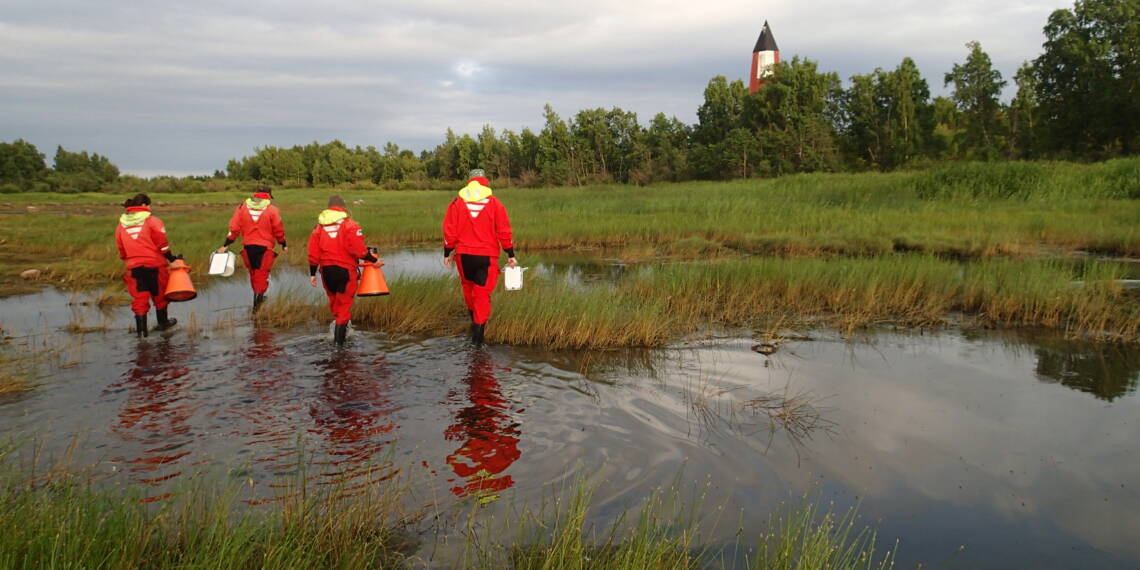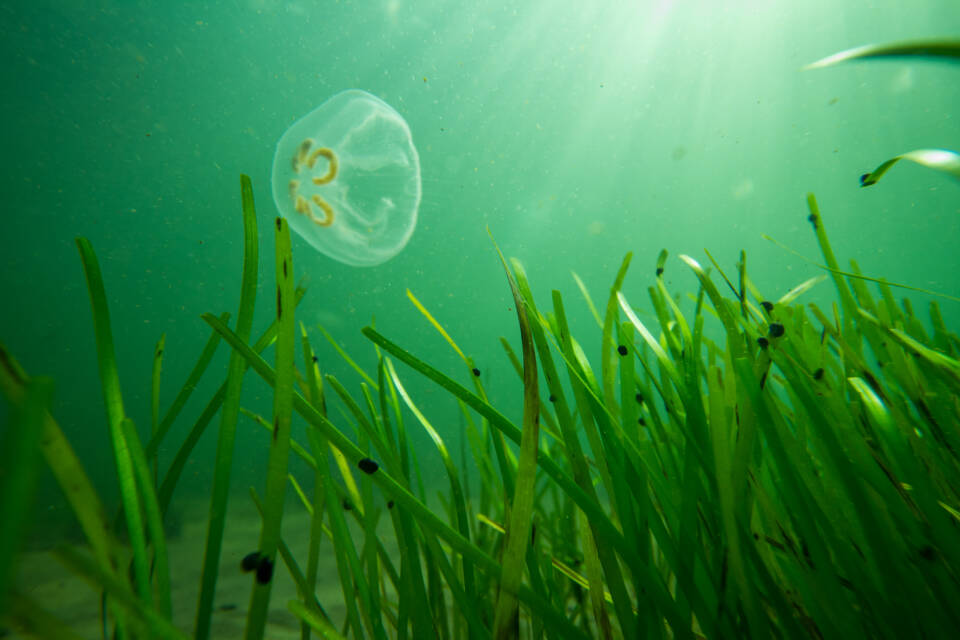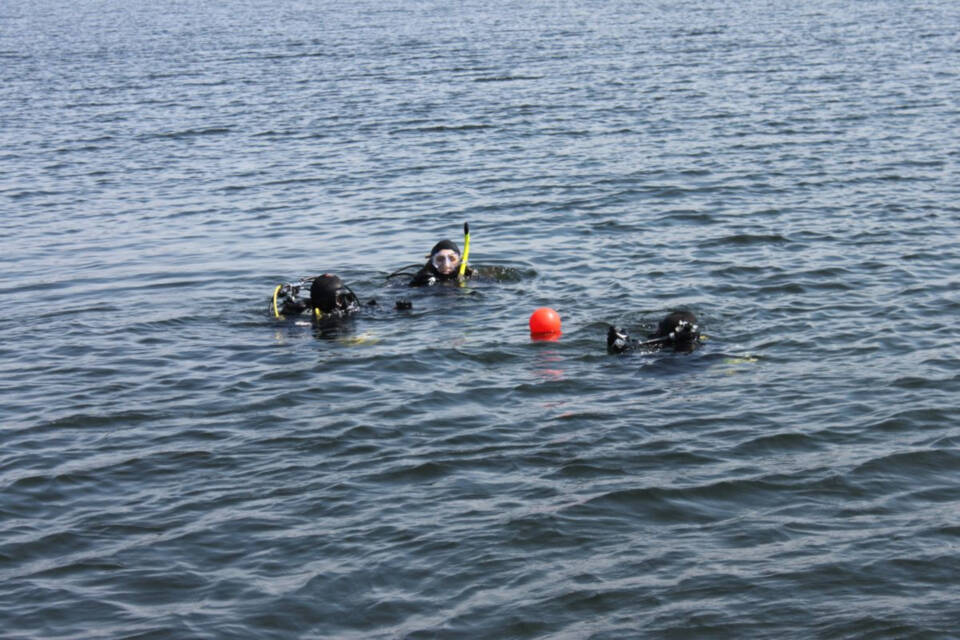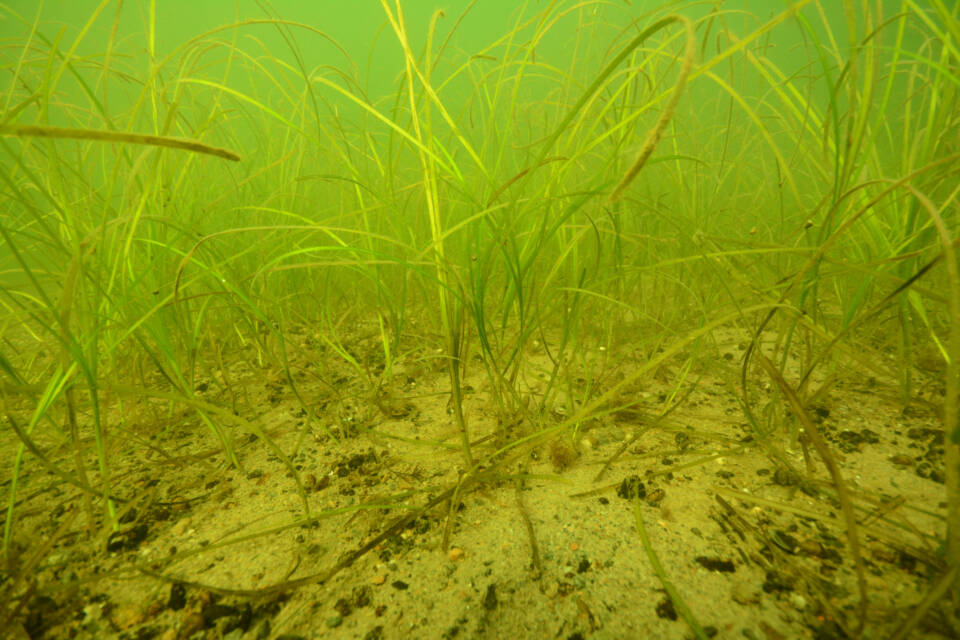
For the Marine Environment – Biodiversea Life IP Maps, Develops, and Restores
Eight years, 20 million euros, and over a hundred people at work. Finland’s largest collaborative project to safeguard the diverse nature of the Baltic Sea, Biodiversea LIFE IP, launched its first field season in the spring of 2022. Since April, field teams have been working on tasks such as catching grayling broodstock, bird surveys, invasive predator control, marine habitat restoration, and developing sustainable nature tourism.
Resources for marine conservation are needed. The condition of all eight Natura habitat types in the Baltic Sea has been assessed as unfavorable: either satisfactory or poor. In the latest assessment of habitat types’ threat status, several underwater combination and key habitat types, including flads, gloe lakes, and river estuaries, as well as soft bottoms, and seagrass meadows, were classified as endangered. A significant part of the problem is directly or indirectly caused by eutrophication, but coastal construction and dredging also threaten some underwater habitats, especially in the inner archipelago.

Currently, the marine protected area network that safeguards underwater nature covers approximately 11 percent of Finland’s marine areas. The EU’s biodiversity strategy, which aims to protect 30 percent of Europe’s marine area by 2030, contributes to the development of the protected area network along the Finnish coast. The Biodiversea project addresses this challenge by collecting information on natural values in previously uncharted areas, developing indicators that describe the condition of protected areas, and examining the regional coverage and quality of the protected area network.
According to the KOKASU project’s report, which examines the coverage of protected areas, the marine protected area network covers about 33 percent of the most valuable underwater nature areas. Underwater biodiversity is concentrated in shallow marine areas in a fragmented manner, which presents its own challenges for area protection. A positive observation for me in the assessment is that even small additions to protected areas, targeted at the most valuable areas, would significantly improve the protection level of endangered and monitored species and habitat types.
To protect the habitat types and species of the Baltic Sea, the project also involves active restoration and rehabilitation measures aimed at improving the condition of habitats and species’ living environments. In practice, this means actions ranging from the reintroduction of species to their historical habitats to broader watershed measures that improve water quality. In terms of marine nature management, it is fair to say that we are at the beginning stages of several measures. Experience has been gained from the restoration of flads in previous projects, but practical restoration measures for many other underwater habitat types and species are still limited. New initiatives in different restoration methods and monitoring the effects of these measures will be undertaken over the next eight years. The goal is to create a national restoration plan that will serve as a roadmap for marine nature restoration even after the project ends.

When the entire coastline is the area in question, this goal makes my head spin a bit. However, the search for potential restoration sites does not have to start from scratch. The VELMU program, which inventories the underwater biodiversity of marine nature, has been providing information on underwater biodiversity since 2004. In addition to mapping data, we have comprehensive datasets covering the entire coastline, including dredging and coastal structures identified from aerial photographs, modeled occurrence areas of endangered species and habitat types, and historical aerial photographs. Spatial datasets combined with experts’ local knowledge and field-collected data, form the backbone of the restoration plan, which will be reviewed during the project.
In practice, marine nature restorations will be piloted during the project at nearly a hundred sites from the Eastern Gulf of Finland to the Bothnian Bay. Sleeves are rolled up, and those heading to the field are looking for potential fish restoration sites, wetland locations, shallow bays, lagoons, and river estuaries to be restored.
New methods for species planting are being developed to restore key species such as bladder wrack, charophytes, and seagrass to their historical habitats. In June, work in this area began in the Kvarken Archipelago by piloting the first-ever transplanting of charophytes. In Tammisaari, divers have been mapping the rooting and spreading of seagrass patches planted the year before last.

The visit is part of the development of monitoring needed to assess the effectiveness of the measures. Restoring species to their historical habitats in the marine environment is not easy. For example, charophytes are very sensitive to environmental changes, and the survival rate of transplanted individuals is not necessarily very high. Experiences from elsewhere in the Baltic Sea show that the main reason for failures in seagrass restoration is the poor choice of planting sites: the environmental conditions of the species’ former habitat have deteriorated to the point where the species can no longer thrive there. The key question to be investigated is which methods and areas should be used for planting to achieve positive outcomes.
Back to points of view

